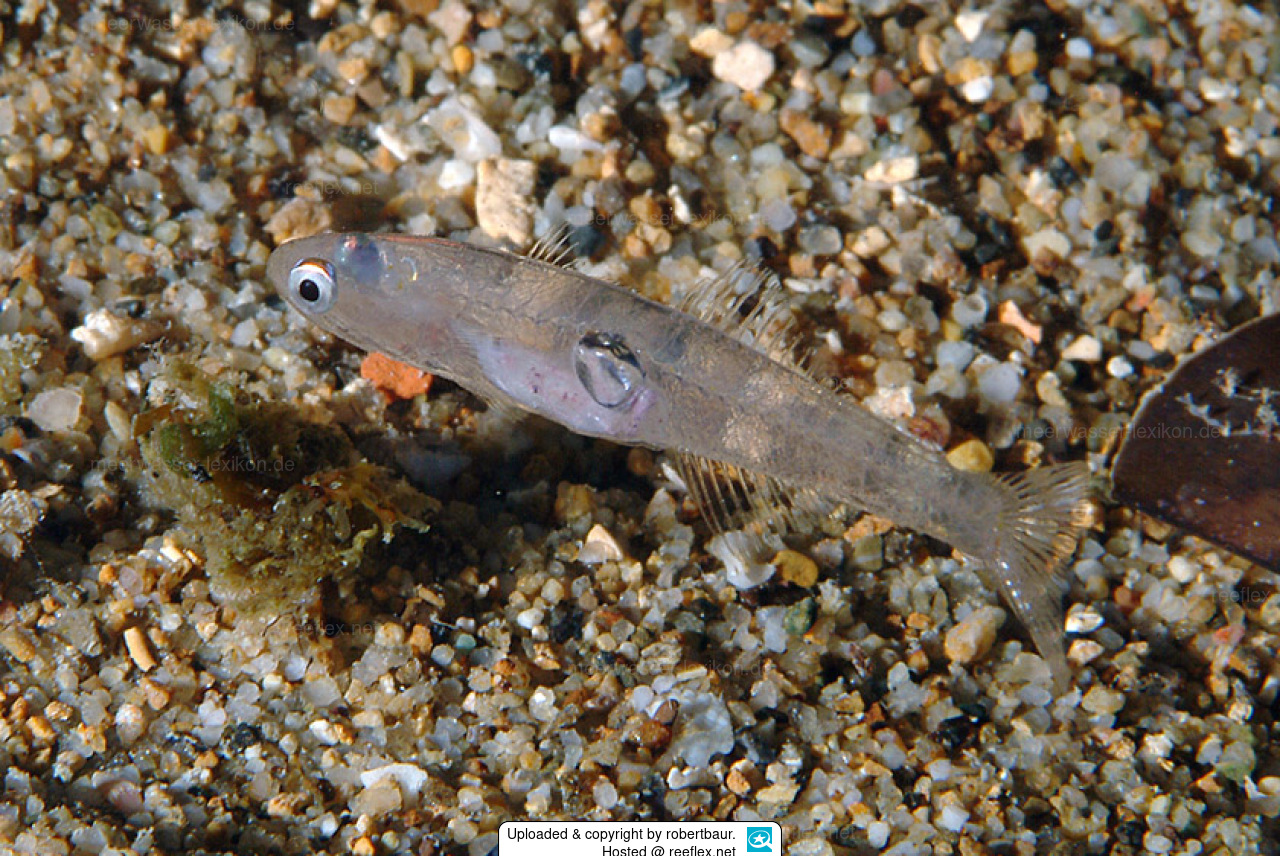Info
Aphia minuta (Risso, 1810)
Distribution:
Atlantic Ocean: Trondheim to Morocco. Also known from the Mediterranean including Black Sea and the Azov Sea.
Biology:
neotenic, pelagic species inhabiting inshore and estuarine waters, over sand, mud and eel-grass. Feed on zooplankton, especially copepods, cirripede larvae and mysids. Spawn in summer in empty bivalve shells.
Probably migrate to deeper water to spawn during summer. Adults die after breeding which does not qualify as a manifestation of semelparity but abbreviate iteroparity according to a recent study. Eggs are pear-shaped.
Synonymised taxa:
Aphia meridionalis Risso, 1827
Aphya minuta (Risso, 1810)
Aphya pellucida (Nardo, 1824)
Argentina aphia Rafinesque, 1810
Atherina minuta Risso, 1810
Brachyochirus aphya Bonaparte, 1846
Brachyochirus pellucidus (Nardo, 1824)
Gobius albus Parnell, 1831-37
Gobius pellucidus Kessler, 1859
Gobius pellucidus Nardo, 1824
Gobius stuvitzii Düben, 1845
Gobius stuwitzii Düben, 1845
Jumping guard
A jumping guard prevents (nocturnal) fish from jumping out.
Wrasses, blennies, hawkfishs and gobies jump out of an unprotected tank in fright if their night rest is disturbed, unfortunately these jumpers are found dried up in the morning on carpets, glass edges or later behind the tank.
https://www.korallenriff.de/en/article/1925_5_Jump_Protection_Solutions_for_Fish_in_the_Aquarium__5_Net_Covers.html
A small night light also helps, as it provides the fish with a means of orientation in the dark!
Distribution:
Atlantic Ocean: Trondheim to Morocco. Also known from the Mediterranean including Black Sea and the Azov Sea.
Biology:
neotenic, pelagic species inhabiting inshore and estuarine waters, over sand, mud and eel-grass. Feed on zooplankton, especially copepods, cirripede larvae and mysids. Spawn in summer in empty bivalve shells.
Probably migrate to deeper water to spawn during summer. Adults die after breeding which does not qualify as a manifestation of semelparity but abbreviate iteroparity according to a recent study. Eggs are pear-shaped.
Synonymised taxa:
Aphia meridionalis Risso, 1827
Aphya minuta (Risso, 1810)
Aphya pellucida (Nardo, 1824)
Argentina aphia Rafinesque, 1810
Atherina minuta Risso, 1810
Brachyochirus aphya Bonaparte, 1846
Brachyochirus pellucidus (Nardo, 1824)
Gobius albus Parnell, 1831-37
Gobius pellucidus Kessler, 1859
Gobius pellucidus Nardo, 1824
Gobius stuvitzii Düben, 1845
Gobius stuwitzii Düben, 1845
Jumping guard
A jumping guard prevents (nocturnal) fish from jumping out.
Wrasses, blennies, hawkfishs and gobies jump out of an unprotected tank in fright if their night rest is disturbed, unfortunately these jumpers are found dried up in the morning on carpets, glass edges or later behind the tank.
https://www.korallenriff.de/en/article/1925_5_Jump_Protection_Solutions_for_Fish_in_the_Aquarium__5_Net_Covers.html
A small night light also helps, as it provides the fish with a means of orientation in the dark!







 robertbaur
robertbaur







